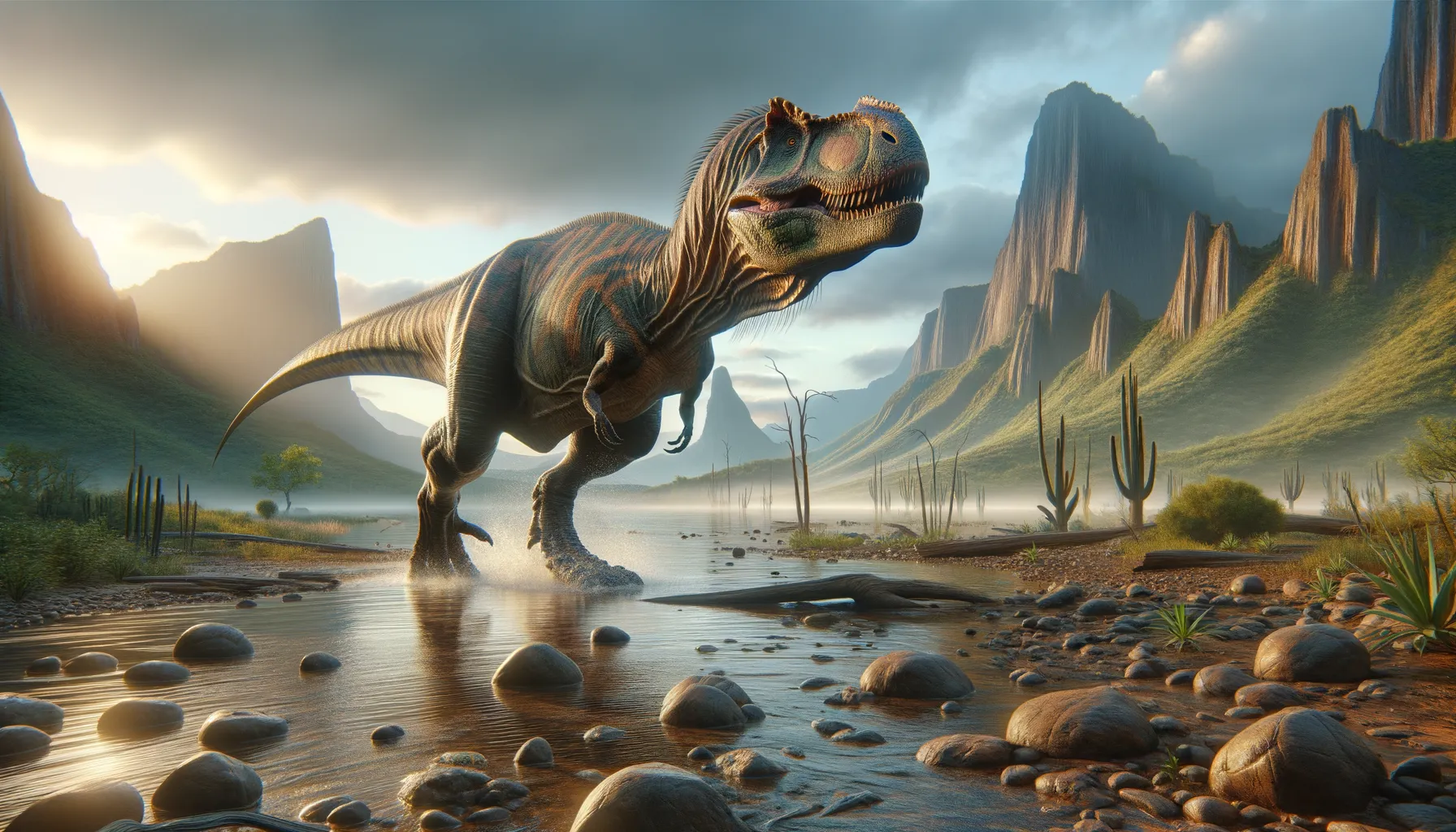
Cionodon
A Mysterious Giant of Ancient Plains
Period
Cretaceous
Length
Could reach up to 10 meters in length.
Height
Average height was likely up to 3 meters.
Weight
Estimated to weigh several tons.
Cionodon was a massive dinosaur from the Late Cretaceous period, recognized for its herbivorous habits and sizeable physical build. Not many fossils have been conclusively attributed to this dinosaur, leading to a certain level of mystery surrounding its exact appearance and behavior. Nevertheless, its assumed physical characteristics suggest it had to be well-adapted to processing plant material efficiently, likely with a beak-like mouth and possibly robust hind limbs for mobility.
Diet
Cionodon was a herbivore. It likely fed on a variety of plants, using its beak-like mouth to shear through tougher vegetation. The exact types of plants it consumed remain speculative due to limited fossil evidence.
Hunting
As a plant-eater, Cionodon did not hunt for prey. Instead, its daily routine involved searching for abundant and nutritious plant material, ensuring enough caloric intake to support its large body.
Environmental challenges
Cionodon lived in a period characterized by shifting climates and varied geography. It had to adapt to changing plant availability, driven by climate shifts and ecological competition. Predators from the time posed additional threats, requiring keen awareness of surroundings. Seasonal variations may have also influenced its migratory or dormant behaviors to cope with resource scarcity.
Speed
Cionodon's speed remains uncertain due to limited evidence.
Lifespan
Likely 30 to 50 years, typical for large dinosaurs.
First discovery
Cionodon was first described in the late 19th century.
Fun Facts
- Cionodon was a herbivorous dinosaur, which means it primarily fed on plants.
- This dinosaur lived during the Late Cretaceous period, around 85 to 70 million years ago.
- Cionodon's name means 'pillar tooth', referring to its tooth structure that helped it grind up plants.
- Fossils of Cionodon have primarily been found in North America, particularly in Colorado.
- Cionodon had a beak-like mouth, similar to modern birds, aiding in its plant-eating habits.
- Despite its plant-based diet, Cionodon likely moved in herds to protect itself from predators.
- Cionodon was part of the hadrosaur family, known for their duck-billed appearance.
Growth and Development
Like many large dinosaurs, Cionodon likely experienced rapid growth phases in its early years. Juveniles may have relied on protective behaviors to avoid predators. Its development included honing effective digestion systems to process plant matter. The path to maturity likely took many years, during which gradual changes increased its resilience and reproductive readiness.
Habitat
Cionodon thrived in lush regions with ample vegetation. It preferred environments that could support its dietary needs, such as floodplains or forested areas. These habitats offered stable food supplies and well-protected ground to avoid predators. Water sources would be vital, necessitating access to adequate streams or lakes within its territory.
Interaction with other species
Cionodon would have interacted peacefully with other herbivores, sharing grazing grounds. However, it maintained a cautious distance from predators. Interactions likely influenced the spread and sharing of vital resources. Some symbiotic relationships may have developed, allowing cooperative behaviors with species that helped each other detect threats.
Natural lifespan
Cionodon had a natural lifespan of several decades.
Reproduction
Like many dinosaurs, Cionodon would have laid eggs. Its reproductive cycle might have included nesting sites in secluded, vegetated areas. There may have been periods of parental care, ensuring offspring reached a self-sufficient stage. Reproductive success hinged on stable ecological conditions and healthy adult specimens.
Social behaviour
Cionodon possibly exhibited herd-like behavior. Such social structures provided safety in numbers, especially against predators. Communication could have been a key element, utilizing vocalizations or physical signals. Social bonds might have aided in resource sharing and territorial organization.
Fossil locations
Confirmed Cionodon fossils are scarce, making exact location details limited. The few remains attributed are primarily found in North America. These locations may hold more undiscovered specimens. Their significant fossil gaps pose challenges in understanding full geographical distributions.
